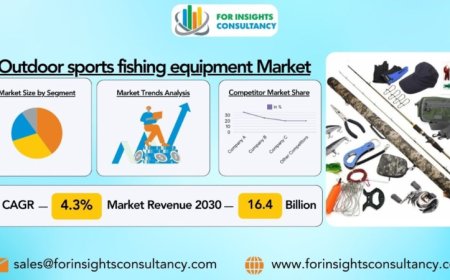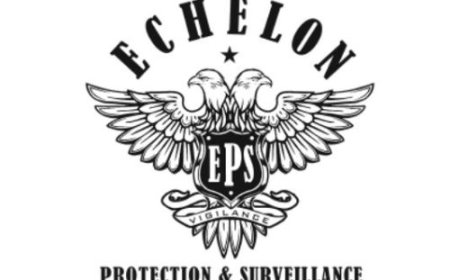Gamifying BI: Increasing Employee Engagement Through Interactive Analytics
Data Governance Services to derive actionable insights and support strategic decisions. However, despite the growing use of BI tools, a common challenge remains employee engagement

Introduction
In a data-driven business environment, organizations are heavily investing in Data Governance Services to derive actionable insights and support strategic decisions. However, despite the growing use of BI tools, a common challenge remainsemployee engagement. Traditional BI dashboards often fall short in inspiring regular use, especially among non-technical staff. As a result, critical insights can go unnoticed, reducing the return on investment in these platforms.
Gamification presents a powerful solution. By applying game-design principles to BI platforms, businesses can enhance user engagement, promote a culture of data-driven decision-making, and create a more intuitive and enjoyable analytics experience. Lets explore how gamifying BI transforms data interaction and drives deeper involvement across departments.
What Is Gamification in Business Intelligence?
Gamification in BI refers to incorporating game mechanicssuch as points, badges, leaderboards, challenges, and rewardsinto data analytics platforms to motivate users and encourage desired behaviors. Instead of treating analytics as a static reporting task, gamification makes data exploration dynamic, interactive, and even fun.
When employees are rewarded for achieving milestones like checking daily reports, meeting KPIs, or identifying insights, they become more motivated to use BI tools regularly. It turns routine data tasks into engaging missions, where users feel invested in the outcome and are recognized for their analytical contributions.
Why BI Engagement Matters More Than Ever
Modern businesses generate vast amounts of data dailyfrom sales performance and supply chain metrics to customer behavior and employee productivity. Yet this data is only useful when acted upon. If employees dont actively use BI tools to inform their decisions, businesses risk losing the competitive edge data can provide.
Low engagement often stems from user fatigue, complexity of dashboards, or a lack of perceived relevance. By gamifying analytics, organizations can make data more accessible and reduce the intimidation factor that many employees feel when interacting with BI tools.
Key Gamification Strategies for BI Platforms
Implementing gamification doesnt mean turning a dashboard into a video game. Instead, it's about creating an experience that rewards curiosity, collaboration, and continuous learning. Below are several proven strategies:
1. Leaderboards and Friendly Competition
One of the simplest ways to spark engagement is through leaderboards. Departments or individual users can be ranked based on their interaction with dashboards, accuracy of insights provided, or completion of training modules. A little friendly competition can motivate teams to dive deeper into data.
2. Achievement Badges and Milestones
Badges can be awarded for specific accomplishmentslike discovering a new sales trend, submitting a useful report, or using advanced filters in dashboards. These achievements build a sense of progress and reward users for skill development.
3. Quests and Challenges
Framing data analysis tasks as "quests" encourages exploration. For example, a marketing team might be challenged to identify underperforming campaigns using BI tools. Upon completion, teams could unlock new data sets or receive points. This keeps the process engaging while focusing on tangible business goals.
4. Instant Feedback and Real-Time Rewards
Providing immediate feedback through pop-ups or notifications can validate actions. When a user builds a report that identifies cost savings, an instant recognition promptsuch as "Insight Unlocked!"creates a dopamine reward loop, similar to that in gaming environments.
5. Integration with Employee Recognition Systems
To reinforce gamification, BI tools can be linked with HR or performance platforms. Points and achievements earned through analytics use can contribute to employee recognition, promotions, or bonuses, aligning individual motivation with company objectives.
Gamified BI in Action: Industry Use Cases
Many organizations are already using gamification to energize BI adoption. Lets look at a few examples:
Retail Industry
In large retail chains, store managers use gamified dashboards to track daily performance metrics. Leaderboards display which stores met their sales targets, and badges are awarded for reducing returns or improving customer satisfaction. This fosters accountability and encourages best practice sharing.
Healthcare Sector
Hospitals and clinics use gamification in BI to encourage medical staff to input accurate data and review patient care reports regularly. Points systems reward teams that reduce readmission rates or improve treatment outcomes based on data-driven decisions.
Finance and Banking
Banks use gamified BI to train employees in detecting fraud patterns. Analysts receive challenges related to identifying irregular transaction behaviors, earning badges for successful identification and deeper investigations. This creates a culture of vigilance and sharpens analytical skills.
Boosting Collaboration Through Gamified BI
Gamification also strengthens interdepartmental collaboration. When analytics tasks are framed as team-based missions, employees from different departments must work together to complete data challenges. For instance, sales and marketing teams may be tasked with jointly analyzing lead conversion funnels and proposing improvements.
These collaborative challenges encourage knowledge sharing and align teams with common objectives. Over time, gamification cultivates a company-wide culture where data-driven collaboration becomes the norm, not the exception.
Designing a Gamification Plan for Your BI Platform
To effectively gamify a BI system, organizations must approach it strategically. Heres how to begin:
1. Define Clear Objectives
Start by identifying the behaviors you want to encourageregular dashboard use, timely reporting, or insightful decision-making. Tailor game mechanics to reinforce these actions.
2. Know Your Users
Design different engagement strategies based on user personas. Executives may prefer strategic challenges with high-level rewards, while operational staff might respond better to task-based incentives.
3. Keep the Experience Seamless
Gamification should be an extension of the existing BI platform, not an added layer of complexity. Ensure that the game mechanics integrate naturally into user workflows.
4. Analyze and Iterate
Monitor how employees interact with gamified elements and gather feedback. Adjust challenges, point systems, and rewards based on what drives the most engagement.
Potential Pitfalls and How to Avoid Them
While gamification is powerful, its not without risks. Poorly executed gamification can lead to:
-
Superficial engagement: Users might game the system to win rewards rather than derive genuine insights.
-
Overemphasis on competition: Excessive leaderboard use may demotivate lower-ranking employees.
-
One-size-fits-all design: Different roles and departments require customized experiences.
To avoid these pitfalls, balance competition with collaboration, and ensure the core purposemaking better data-driven decisionsremains central to the gamification effort.
The Future of Gamification in BI
As BI tools evolve with AI and machine learning, gamification will become even more personalized. Systems will be able to adapt challenges based on user behavior, offer intelligent tips, and dynamically adjust rewards. This will create a more immersive and intelligent user experience.
Moreover, as digital-native employees enter the workforce, their expectation for interactive and game-like tools will grow. Gamified BI platforms will no longer be a noveltytheyll be a necessity for engaging the modern employee.
Conclusion
Gamifying BI is more than a trend; its a strategic approach to making analytics more accessible, engaging, and impactful. By combining interactive elements with meaningful incentives, organizations can ensure that their investment in Business Intelligence solutions leads to higher adoption, better decisions, and a stronger data culture. As the business landscape becomes increasingly complex, empowering employees through engaging analytics could be the competitive differentiator companies need.







































